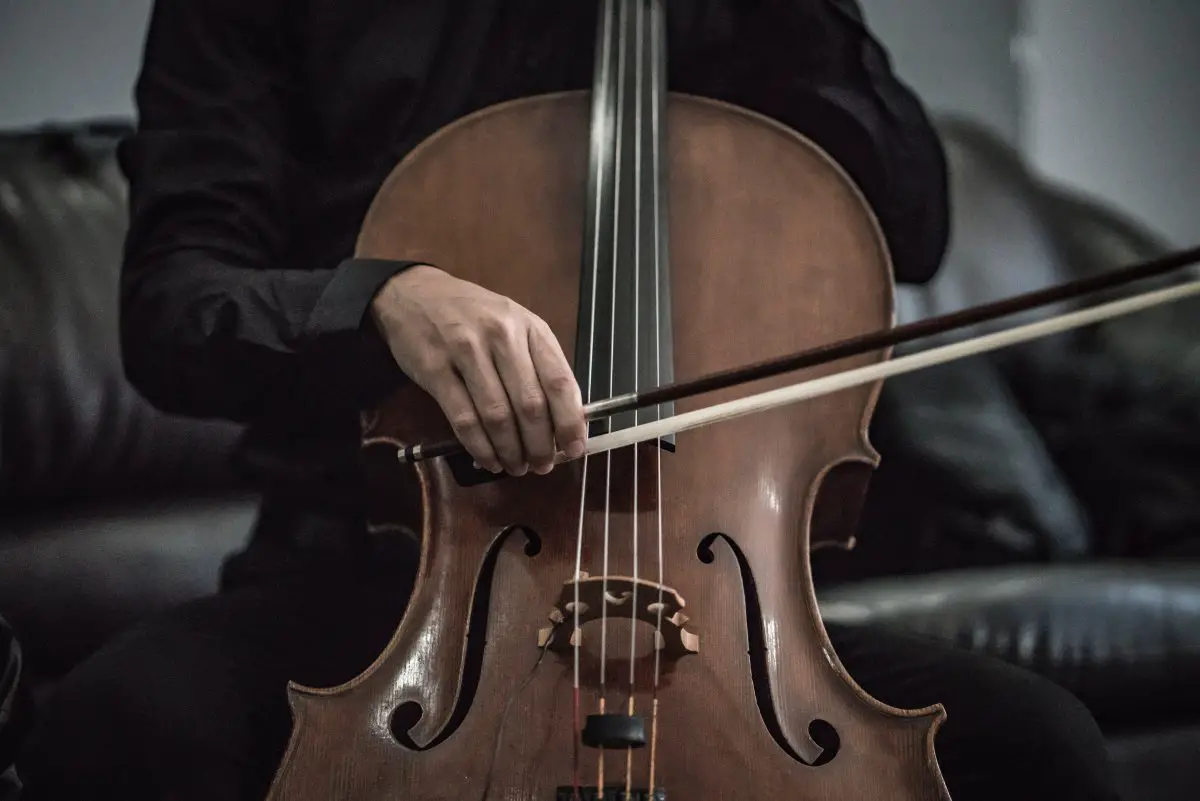Hey there, music enthusiasts! Ever wondered what makes a cello truly remarkable? Get ready to uncover the secrets of this majestic instrument that resonates with the soul. Can you hear the call of the cello?
What is a cello? A cello is a large stringed instrument closely related to the viola, violin, double bass, and bass violin, known for its deep and captivating tones. It’s a true masterpiece that has captured the hearts of musicians and listeners alike for centuries.
What is the origin of the cello?
Where did the cello come from, and how has it evolved over time? Let’s take a journey back in time and uncover the fascinating history of this enchanting instrument.

In the mid-16th century, a three-stringed bass violin laid the foundation for what would become the cello. It was primarily used in concert with the violin, creating a harmonious partnership on the musical stage. Composers began crafting pieces specifically for this instrument, igniting its early popularity.
Around the mid-17th century, a significant development transformed the cello into the instrument we recognize today. With the introduction of metal-wrapped strings, a remarkable transformation occurred, giving birth to a more refined and versatile cello. These innovations brought a richer tonal palette and enhanced playability, propelling the cello’s prominence in the musical world.
…the cello continued to grow in popularity, earning its well-deserved place in the musical landscape.
During the Baroque era, the cello truly flourished. Its design underwent further refinements, including the addition of a spike or endpin for support. This era witnessed the composition of countless exceptional works for the cello, further solidifying its place as a prominent instrument.
Considering the rich history and evolution of the cello, it’s incredible to think about how this instrument has captivated audiences for centuries. With each passing era, the cello continued to grow in popularity, earning its well-deserved place in the musical landscape.
AKAI Professional MPK Mini MK3

AKAI Professional MPK Mini MK3
What are the distinct features of a cello?
Let’s dive into the unique characteristics that define this captivating instrument.
1. Construction and materials
A cello’s body is typically crafted from wood, sharing a general shape similar to that of a violin. Its larger size near the bottom gradually tapers towards the top, creating a distinctive curving indentation in the middle. This design allows for optimal resonance and projection of sound.
2. Strings and bows
A cello is equipped with four strings that can be made from a variety of materials, such as synthetics, metal, or gut. Traditionally, bows are crafted from brazilwood, while higher-quality bows may be made from the heartwood of the tree. Horsehair serves as the rubbing surface of the bow, coated with rosin to enhance the grip on the strings. It’s worth noting that synthetic materials are also used for bows, offering an alternative option.
3. Variations in size and tuning
Cellos come in different sizes, ranging from slightly larger than the full 4/4 size down to tiny 1/16 sizes, primarily designed for children. However, some individuals with smaller frames opt for 7/8-sized cellos to facilitate comfortable hand positions. Additionally, cellos are traditionally tuned to A, D, G, and C, with alternate tunings occasionally employed for specific musical purposes.
The craftsmanship and design of a cello, from its carefully selected materials to its unique shape, contribute to the instrument’s distinct tonal qualities and playability. When considering the right cello for yourself, it’s important to explore various sizes and find one that suits your comfort and playing style.

How did the cello gain popularity?
The cello’s enduring presence in classical music, its important role in chamber ensembles, and its expanding influence in contemporary genres highlight its timeless appeal and adaptability. Whether you’re drawn to the classics or exploring new musical territories, the cello offers a world of sonic possibilities.
Let’s dive into the world of cello music and its enduring appeal:
1. Cello in classical, Baroque, and romantic music
The cello is an integral part of classical music, particularly in compositions from the Baroque and Romantic eras. Its expressive and versatile nature allows it to shine as a solo instrument, in concertos, and as a member of orchestras.
2. Role in chamber music and string quartets
The cello’s rich and resonant tones make it a vital component of chamber music, providing the low bass end and adding depth to the ensemble. String quartets, in particular, often feature a cello as one of their core members.
3. Wide range of compositions
Countless exceptional pieces have been composed specifically for the cello. Notable among them are Bach’s six cello suites, which showcase the instrument’s technical capabilities and emotional depth. These compositions continue to captivate audiences to this day.
4. Expanding into contemporary genres
In recent years, the cello has transcended classical boundaries and made its mark in contemporary music genres such as R&B and pop. Its expressive qualities have attracted artists looking to add a touch of warmth and richness to their sound. This versatile instrument has even found a place in traditionally fiddle-centric genres like Celtic and Americana music.
How much does a cello cost?
The following table provides a comparison of different brands of cellos for a comprehensive view of various cello options catering to different skill levels and budget ranges. Whether you’re a beginner in search of your first instrument or a professional seeking to upgrade, this table can offer some valuable insights.
| Brand | Model | Price Range (USD) | Size Options | Body Material |
|---|---|---|---|---|
| Yamaha | SVC-210SK | $2,000 – $2,500 | Full | Spruce/Maple |
| Eastman | VC305 | $1,500 – $2,000 | 4/4, 3/4, 1/2 | Spruce/Maple |
| Cecilio | CCO-100 | $200 – $300 | 4/4, 3/4, 1/2, 1/4, 1/8 | Spruce/Maple |
| D Z Strad | Model 101 | $1,000 – $1,500 | Full | Spruce/Maple |
| Cremona | SC-165 | $800 – $1,000 | 4/4, 3/4, 1/2, 1/4 | Spruce/Maple |
| Stentor | 1108/C | $500 – $700 | 4/4, 3/4, 1/2, 1/4, 1/8 | Spruce/Maple |
| Mendini | MCT-E+SD+PB | $200 – $300 | 4/4, 3/4, 1/2, 1/4, 1/8 | Spruce/Maple |
| Primavera | 200 | $400 – $600 | 4/4, 3/4, 1/2, 1/4, 1/8 | Spruce/Maple |
Advantages and disadvantages of learning the cello
Choosing to learn an instrument is a personal decision that comes with its own set of benefits and challenges. The cello, a versatile string instrument known for its deep and warm tones, is no different. Let’s delve into the pros and cons of learning the cello.
Advantages of learning the cello
The benefits of learning the cello are many and varied, offering both personal and musical development opportunities:
- Deep, Rich Sound: The cello is revered for its warm, rich tones, closely resembling the human voice. This allows you to express a wide range of emotions when playing.
- Versatility: The cello is a versatile instrument that fits into many musical genres, from classical to jazz, rock, and even pop music.
- Physical Development: Playing the cello can improve fine motor skills and hand-eye coordination, as it requires precise finger placement and bowing techniques.
- Intellectual Stimulation: Learning to read music and understanding the complex rhythms and dynamics involved can enhance cognitive skills like problem-solving and memory.
- Emotional Outlet: The cello can provide a powerful emotional outlet, helping to manage stress and enhance emotional well-being.
- Social Opportunities: Playing the cello can open up opportunities to join orchestras or chamber music groups, fostering social interaction and teamwork.
Disadvantages of learning the cello
While the cello has many advantages, it’s also important to consider the potential challenges that come with learning this instrument:
- Physical Challenges: The size and weight of the cello can make it physically demanding to play, especially for younger or smaller individuals.
- Difficulty Level: As a string instrument with no frets, the cello can be difficult to master. It requires precision in finger placement to achieve the correct pitch.
- Cost: Cellos can be expensive, and the cost of the instrument, maintenance, and lessons can add up.
- Transportation Issues: Due to its size, transporting a cello can be difficult and may require special cases or arrangements.
- Practice Time: Like any instrument, mastering the cello requires a significant investment of time and consistent practice.
If you want even more tips and insights, watch this video called “15 Minute Beginner Cello Lesson | Adult Cello” from the AdultCello YouTube channel.
Frequently asked questions (FAQ)
Do you still have questions about what a cello is? Below are some of the most commonly asked questions.
Can I use a cello in genres other than classical music?
Absolutely! While the cello has deep roots in classical music, it has also found its place in contemporary genres such as R&B, pop, and even rock. Its rich and expressive tones can add a unique touch to various musical styles.
Do I need a professional recording studio to capture the best sound from a cello?
Not necessarily. With advancements in technology, you can achieve excellent recordings even in a home recording setup. Pay attention to microphone selection, placement, and optimizing the acoustics of your recording space to capture the cello’s true essence.
Can I experiment with different tunings on the cello?
Certainly! While traditional tuning is widely used, exploring alternate tunings can offer new creative possibilities. Just be sure to tune your cello carefully and make any necessary adjustments to maintain proper tension on the strings.
Conclusion
And that’s a wrap on our journey through the captivating world of cellos! We’ve uncovered the origins, characteristics, and versatile nature of this enchanting instrument. Did I cover everything you wanted to know? Let me know in the comments section below (I read and reply to every comment). If you found this article helpful, share it with a friend, and check out my full blog for more tips and tricks on all things music-related. Thanks for reading, and keep embracing the melodious magic of the cello!
Key takeaways
This article covered the fascinating world of cellos. Here are some key takeaways:
- The cello originated from the bass violin and evolved over time to become the instrument we know today.
- Cellos vary in size, tuning, and materials, offering options to suit different players.
- The cello thrives in classical music but has also made its mark in contemporary genres.
- Experimenting with different tunings can unlock new creative possibilities on the cello.















